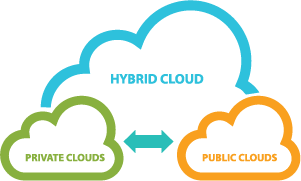These 4 methods will save thousands in case of a data breach!
No business wants to experience a data breach – it’s like a digital nightmare come to life. Unfortunately, with today’s cyber landscape, it’s increasingly difficult to avoid them altogether. In fact, according to IBM Security’s 2022 Cost of a Data Breach Report, a staggering 83% of organizations have suffered more than one data breach.
Data breaches can hurt a business in many ways – from the immediate cost of remediation to lost productivity, lost business, lost customer trust, and extensive legal fees. In 2022, the global cost of a single data breach has climbed to a staggering $4.35 million, up 2.6% from last year. If you’re a business in the U.S., that cost rises to a jaw-dropping $9.44 million, while in Canada, it’s an average of $5.64 million. You might wonder how these costs can be so high? Well, part of it comes from the lawsuits these organizations face after such data breaches because of their failure to safeguard and protect confidential information. Some of the examples are LastPass, you can reach about that breach HERE.

Other examples, in 2017, Equifax, a major credit reporting agency, suffered a data breach that exposed the personal information of over 143 million customers. The breach included names, birth dates, Social Security numbers, addresses, and other sensitive data. Equifax faced widespread criticism for its handling of the breach, including a delay in notifying affected customers and providing inadequate support to those impacted. As a result, Equifax faced a public relations crisis, with customers losing trust in the company. This, in turn, led to a decline in stock value and lawsuits, costing the company over $1 billion in expenses.

Another example is the 2013 Target data breach, where hackers stole the personal and financial information of over 110 million customers. The breach included credit and debit card information, names, addresses, and phone numbers. Target faced a backlash from customers, who felt betrayed by the company’s failure to protect their information. The company’s sales dropped in the following quarters, and it also faced lawsuits, fines, and costs related to the breach, which totaled over $200 million. If you think about it, once you start digging and dissecting every aspect of the company you will find some pitfalls like outdated Cyber Sec Policies or old unremoved accounts, and a million other things. So, if a large company with strict policies, and thousands of employees missed a vital piece in their security that caused a breach, imagine how much exposure your business can face without all the safeguards in place?
While smaller companies may experience lower costs, the impact of a data breach is often more devastating for them. They don’t have the same resources as larger companies to offset the expenses. In fact, it’s estimated that 60% of small companies go out of business within six months of a cybersecurity breach.
Businesses don’t need to succumb to the inevitability of a data breach. There are proven tactics they can take to mitigate the costs and limit the damage of a cyber-attack. And these tactics aren’t just theoretical – they’re backed by hard facts from IBM Security’s report.
So, what can businesses do to reduce the impact of a breach?
First, consider using a hybrid cloud approach. While most organizations use the cloud for data storage and business processes, 45% of all data breaches happen in the cloud. But not all cloud strategies are created equally. Breaches in the public cloud cost significantly more than those in a hybrid cloud. A hybrid cloud approach means that some data and processes are in a public cloud, and some are in a private cloud environment. Surprisingly, using a hybrid cloud approach is even better than a private cloud.
A hybrid cloud approach is more secure than using a private cloud-only strategy for a few reasons:

- Diversification: With a hybrid cloud approach, companies can diversify their cloud strategy by using both private and public clouds. This reduces the risk of relying on a single cloud provider or a single type of infrastructure, which can be vulnerable to cyber-attacks.
- Better control: In a hybrid cloud environment, companies have more control over where their data and applications are stored and how they’re accessed. This allows them to apply different security policies to different types of data, depending on the level of sensitivity.
- Cost-effective: A hybrid cloud strategy can be more cost-effective than using a private cloud-only approach. Companies can use public cloud resources for non-sensitive data, while keeping sensitive data in a private cloud environment. This helps to reduce the overall cost of cloud storage and processing.
- Flexibility: A hybrid cloud approach allows companies to have the flexibility to move data and applications between public and private clouds as needed. This can help to ensure that the right data is stored in the right place at the right time, without sacrificing security.
Overall, a hybrid cloud approach provides a more comprehensive and secure cloud strategy by leveraging the strengths of both public and private clouds while minimizing their weaknesses.
Second

Second, put in place an incident response plan and practice it. You don’t need to be a large enterprise to create an incident response plan. It’s simply a set of instructions for employees to follow should any number of cybersecurity incidents occur. Having a practiced incident response plan can reduce the cost of a data breach by an average of $2.66 million per incident.
If you aren’t sure where to begin there are many templates online that will get you a starting point to work with. Otherwise finding a good Managed IT Services provider or a managed security service provider (MSSP) such as AlphaCIS in your area to help create these policies and work with your team in order to put them in place and administer to your employees. Administering the policies and actually having the employees read and follow these is typically best done with cyber security training. What we do with our clients is to first administer cyber security training, or phishing training, so that everyone understands the importance of these policies. We make sure all employees pass the training, then we send out the policy and cyber security documents.
Third

Third, adopt a zero-trust security approach. Zero trust is a collection of security protocols that work together to fortify a network. For example, multi-factor authentication, application safe listing, and contextual user authentication. Approximately 79% of critical infrastructure organizations haven’t adopted zero trust. Doing so can significantly reduce data breach costs. Organizations that don’t deploy zero trust tactics pay about $1 million more per data breach. Zero Trust is basically a completely different way of looking at cybersecurity. We are making the assumption that hackers have already gained access to the system, and then we make sure that we minimize the type of damage they can do once in. This basically means that we disallow everything, and only allow certain tasks that are necessary for their work function. We implement 2FA for each step of the way making sure that a user confirms their identity the entire time. Although it takes a little time to implement, it’s so far, the most comprehensive security strategy any business can implement in 2023.
Fourth

Fourth, use tools with security AI and automation. The right security tools can make a big difference in the cost incurred during a data breach. Using tools that deploy security AI and automation brought the biggest cost savings – a 65.2% reduction in data breach expense. These solutions include tools like advanced threat protection (ATP) and applications that hunt out threats and automate the response. This allows us to use tools for customers that utilize machine learning and pattern learning to effectively determine the baseline for every user and if their activity falls outside the norm of this baseline notifies our engineers, or automatically takes mitigating steps to stop the threat.
In Conclusion
But where do businesses start when it comes to improving their cyber resilience? Many of these tactics are simply best practices, and businesses can get started by taking them one at a time and rolling out upgrades to their cybersecurity strategy. Working with a trusted IT provider such as AlphaCIS in the Atlanta area can put together a roadmap, address the “low-hanging fruit” first, and then move on to longer-term projects and strategy. For example, “low-hanging fruit” would be putting multi-factor authentication in place. It’s low-cost and easy to implement, and it significantly reduces the risk of a cloud breach. The final destination of these efforts could be a full zero trust environment, or just making sure that all employees have gone through some security training and acknowledges that they understand the cyber security policies in place.
If your business needs help securing their systems AlphaCIS can help, you can set up an appointment here. We have been offering IT and security support for businesses in the Atlanta area for over 13 years. So, give us a call or book a quick 7 min discovery call with us 678-619-1218.

Dmitriy Teplinskiy
I have worked in the IT industry for 15+ years. During this time I have consulted clients in accounting and finance, manufacturing, automotive and boating, retail and everything in between. My background is in Networking and Cybersecurity



